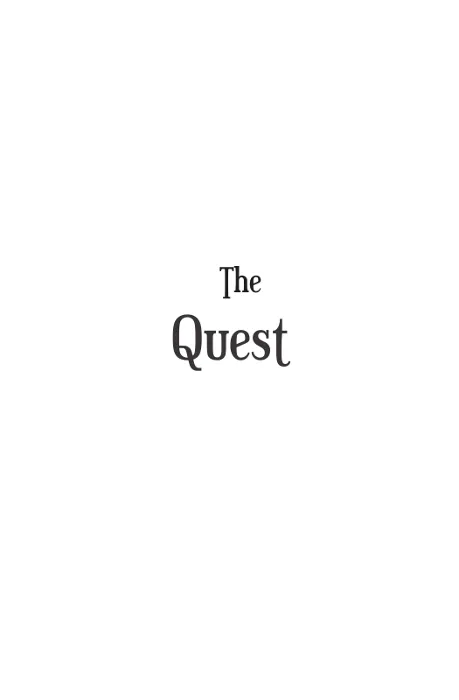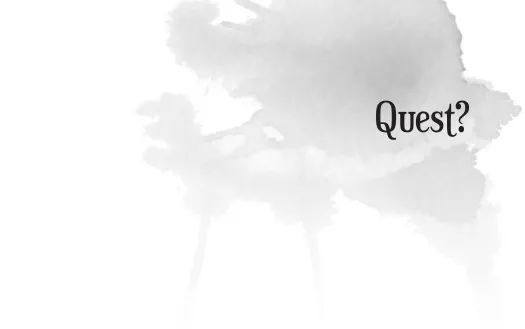
eBook - ePub
You Are. That Is. Creative
Finding your way to your greater creative self
Noula Diamantopoulos
This is a test
Partager le livre
- English
- ePUB (adapté aux mobiles)
- Disponible sur iOS et Android
eBook - ePub
You Are. That Is. Creative
Finding your way to your greater creative self
Noula Diamantopoulos
Détails du livre
Aperçu du livre
Table des matières
Citations
À propos de ce livre
For those who have attempted to overcome your concerns about making art, about creating, about being creative and about finding a better part of yourself in this process. This is a book for you.
Foire aux questions
Comment puis-je résilier mon abonnement ?
Il vous suffit de vous rendre dans la section compte dans paramètres et de cliquer sur « Résilier l’abonnement ». C’est aussi simple que cela ! Une fois que vous aurez résilié votre abonnement, il restera actif pour le reste de la période pour laquelle vous avez payé. Découvrez-en plus ici.
Puis-je / comment puis-je télécharger des livres ?
Pour le moment, tous nos livres en format ePub adaptés aux mobiles peuvent être téléchargés via l’application. La plupart de nos PDF sont également disponibles en téléchargement et les autres seront téléchargeables très prochainement. Découvrez-en plus ici.
Quelle est la différence entre les formules tarifaires ?
Les deux abonnements vous donnent un accès complet à la bibliothèque et à toutes les fonctionnalités de Perlego. Les seules différences sont les tarifs ainsi que la période d’abonnement : avec l’abonnement annuel, vous économiserez environ 30 % par rapport à 12 mois d’abonnement mensuel.
Qu’est-ce que Perlego ?
Nous sommes un service d’abonnement à des ouvrages universitaires en ligne, où vous pouvez accéder à toute une bibliothèque pour un prix inférieur à celui d’un seul livre par mois. Avec plus d’un million de livres sur plus de 1 000 sujets, nous avons ce qu’il vous faut ! Découvrez-en plus ici.
Prenez-vous en charge la synthèse vocale ?
Recherchez le symbole Écouter sur votre prochain livre pour voir si vous pouvez l’écouter. L’outil Écouter lit le texte à haute voix pour vous, en surlignant le passage qui est en cours de lecture. Vous pouvez le mettre sur pause, l’accélérer ou le ralentir. Découvrez-en plus ici.
Est-ce que You Are. That Is. Creative est un PDF/ePUB en ligne ?
Oui, vous pouvez accéder à You Are. That Is. Creative par Noula Diamantopoulos en format PDF et/ou ePUB ainsi qu’à d’autres livres populaires dans Psychology et Creative Ability in Psychology. Nous disposons de plus d’un million d’ouvrages à découvrir dans notre catalogue.
Informations


Have we lost the art of dialogue, the art of exchanging ideas and viewpoints? It seems that instead of wishing to participate in an exchange of ideas, theories and perspectives, we are seeking instead to change the other’s viewpoint. Have we become attached to being right? Or maybe we don’t like being wrong? In my psychotherapy practice, I often get to hear couples talking. Each person becomes defensive about their ideas and thoughts and their general outlook on life. They are not seeking to understand, they just want the other person to know that they are in the wrong.
How can we learn to experience the wonder of a true exchange of viewpoints, life experiences and reflections, where the acts of giving and receiving are inclusive, where there is no right or wrong, but just is? For in this ‘just is’ place, insights and things we didn’t see before will naturally come to light. This is Quest, a space where we explore each other’s questions and renounce the need for answers, where giving and receiving encourages our imagination and we enter a place of wonderment. The power of Quest is the way in which our imagination is prompted through the simple process of an interchange of questions, where powerful, infinite insights take the place of narrow, right answers.
Quest is the art of questioning and suspending the need to pursue an answer. It is an art because there is no predetermined answer, consideration and contemplation. It requires you to search for the most fitting words as you form the question. It demands articulacy. It obliges you to engage with your imagination. It forces you to make things up in the creation of a question. These are the nuances of Questing, like searching for the most compelling tone or colour for your painting, or the most alluring movement in a line drawing - nuances that are simple yet which express so much.
| How To Quest |
Two people are necessary to Quest. You need a piece of paper, a pen and silence as well as a genuine and enquiring attitude with which to pursue each other’s questions. One person begins by writing a question down on a piece of paper. The other person responds to the question with another question on the same sheet. I usually Quest for 10 questions in total or until five questions have been asked by each participant. But then again I once Quested for 90 minutes non-stop with one person. I have included a section at the end of the Quest transcripts where you too can Quest with a friend.
| The History Of Quest |
This book exists partly because of my public art performance called Quest. Because several hundred people sat down to engage with me silently around a colourful piece of blotted paper. Because since 2011 I have transcribed over 6,000 questions and I wondered what all this meant.
Was it as simple as that? In some ways, yes! Why did so many people want to exchange 10 questions with me? At a practical level, the attraction is its simplicity (not much instruction required), spontaneity (no one knew where the dialogue would go) and the short time frame required (in our current time-poor society, 10 questions seemed feasible).
I have learnt that Quest engages with the imagination to uncover what is really on our minds when we ask a question. Most of the time we say one thing but mean another and we expect the person we are talking to to be able to grasp what we mean automatically. Both parties get frustrated and then we end up saying “You don’t understand me.” What’s closer to the truth is “I just don’t understand my Self.” The reason why this happens so often is that, contrary to our faith in a dictionary, all words that are used to describe or explain are subjective. We impose our own meaning on words or we come to our own conclusions, conclusions that are not even based on experience. For example we may say “I can’t draw” without ever having tried to learn.
Quest is a way of getting to know ourselves better. In a sense it is a self-awareness tool. Its simplicity and child’s play approach allows the imagination to be engaged. Imagination is the welcoming committee for insight.
I created my public performance art Quest from my coaching and psychotherapy practice. I had been coaching clients for a while – some were artists, others young managers and many were career managers and executives. Although I am an artist and a psychotherapist, I previously had an 18-year career in the corporate world. I understand the environment of the workplace and its pressures, the desire to realise our ambitions in the workplace and balance them with a personal life. How do you create harmony between personal and professional goals? Will they always be incompatible?
When I am coaching I make no assumptions. This means that I ask a lot of questions. By the time the client and I have explored the topic that has been presented, the client has a deeper understanding of their concern. At this point I may ask a series of provocative questions to inspire their imagination to look from another perspective. This other vantage point I call ‘over there’ and I ask my clients “What do you see?” As a coach/therapist, I don’t know what’s over there – but I do believe in there being an ‘over there’. This is how I embrace uncertainty. ‘Over there’ is unknown and the best tools we have to explore it are our imagination and curiosity.
Having experienced being coached by me, my gallery curator asked if I would turn what I do in my therapeutic practice into an exhibition, a performance art exhibition. What? No sculptures, no drawings? What’s performance art anyway – is that a real art form? An instant later I said “Yes, absolutely!” There was no vision, just a feeling that this was a direction worth exploring. After all, everything I do is interconnected. This exhibition could explore that interconnectedness.
Within a few days I had found large sheets of watercolour paper that I would drip paint onto and watch it slide down. I would then spray on water and add other media and more colour. Each artwork in turn gave birth to a new work as I created monoprints like the psychological mirror images of Rorschach, the inkblot test images used to stimulate the subconscious. ‘That’s interesting’, I thought, ‘the inkblot test!’ So is it possible that people participating in this exercise would spend time...